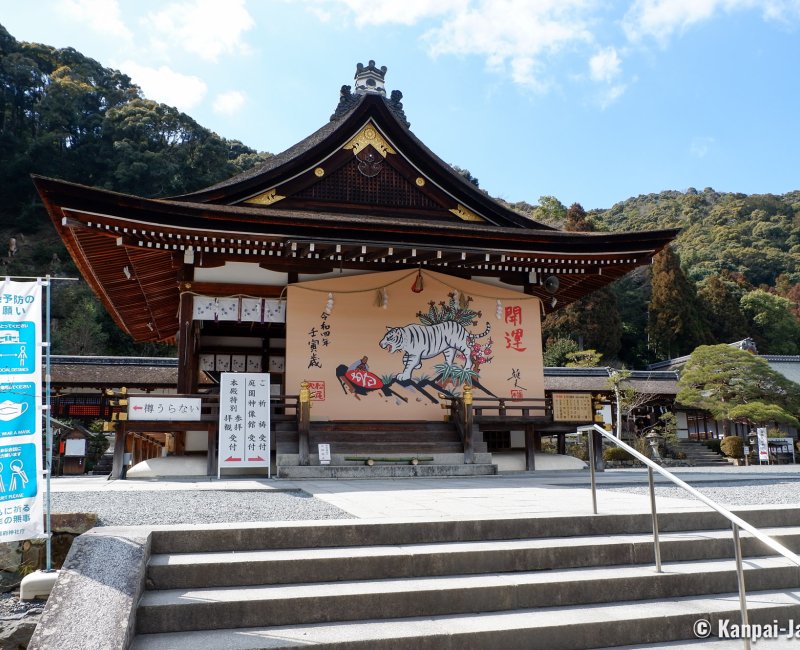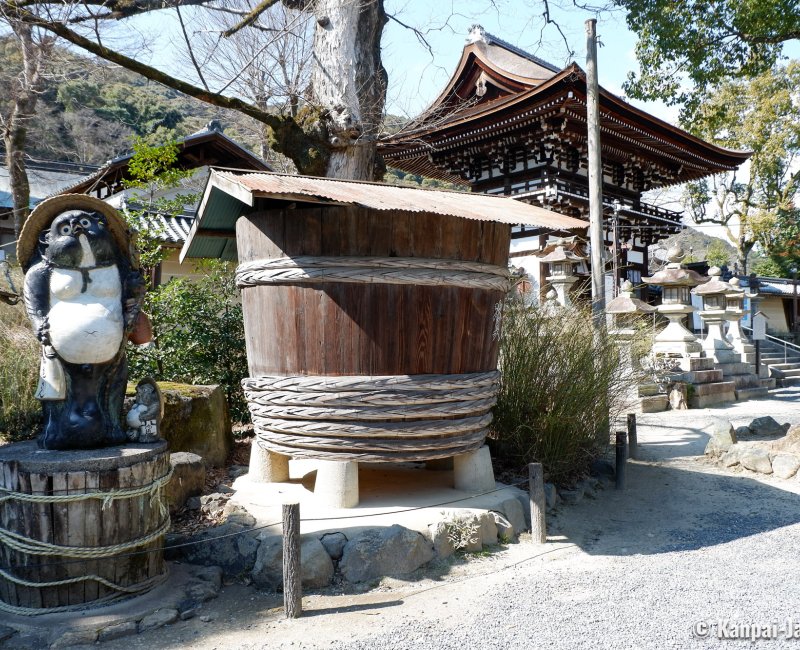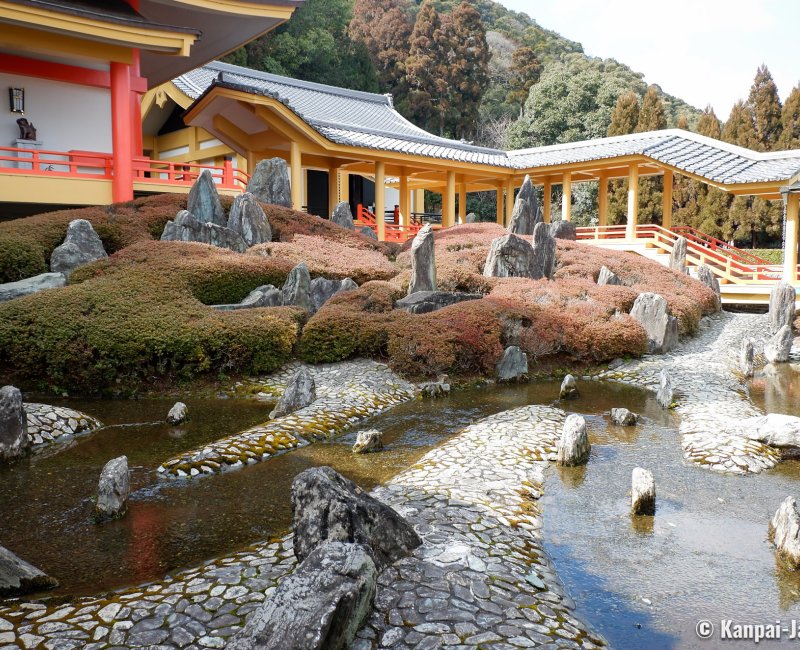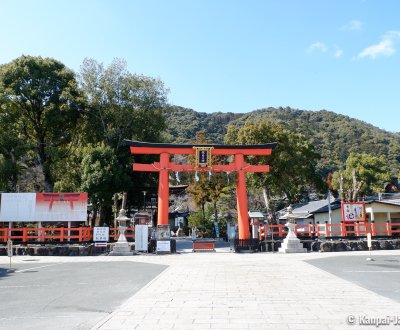Matsunoo Taisha
The Shrine of Miraculous Water and Sake in Kyoto
Matsunoo Taisha is a large and old Shinto shrine located at the foot of Mount Matsuo, in the south of Arashiyama on the west of Kyoto. The site was built in 701 to worship a natural spring considered sacred due to its supposed healing properties. People think it brings good fortune to Japanese sake brewers and miso makers. There are also 3 gardens designed by landscape architect Mirei Shigemori.
Matsunoo Taisha is a large neighborhood shrine, with a remarkable tall vermilion torii ⛩️ gate, and is the reference Shinto site to approximately one third of the Kyoto’s inhabitants living in one of the western wards of the city. Consequently, New Year’s day is a yearly hallmark event attracting each January 1rst many worshippers for the hatsumode, the 1rst visit of the shrine in the year. On this occasion, a giant ema votive plate, called Mizunoto, is exhibited at the front of the Haiden worshipping pavilion, a custom dating to 1983. The ema is changed every year to display the current opening year’s Chinese zodiac sign, for example, a tiger in 2022, then a rabbit in 2023.

Founded in 701 by the Hata clan, Matsunoo Taisha is one of the former protector shrines of Heian-kyo, the capital of the imperial power in 794 and future Kyoto. It is by the way located opposite to the famous Yakasa-jinja, guarding the eastern entrance of Kyoto. The spiritual site was initially built around a waterfall on the side of Mount Matsuo, whose trickling water is considered pure and beneficial.
Matsunoo Taisha is a place to pray for good health and a long life, concepts symbolized by the many statues of tortoises (a symbol of longevity) scattered throughout the Shinto grounds. Sake 🍶 brewers (more precisely makers of nihonshu Japanese alcohol) and miso paste makers alike go to the shrine to pray for a quality production and help foster the prosperity of their businesses.
The grounds are home to a nice collection of sake barrels and amateurs can even visit the shrine’s small alcohol museum. The latter shows the main steps of nihonshu making and the strong relationship between this pure traditional alcohol and the Shinto cult.

View on 3 groundbreaking Japanese gardens
The inner main pavilion is designated Important Cultural Asset for its characteristic roof in the matsuo-zukuri architectural style. In the back of the grounds, a 2nd museum, called Shinzokan, is sheltering about twenty authentic deity statues made during the Heian (794 - 1185) and Kamakura (1185 – 1333) periods in near darkness.
Outside, the bright pavilion sheltering the cultural site is surrounded by 2 of the 3 modern Japanese gardens laid out in the grounds designed by Mirei Shigemori (1896 - 1975) in 1975:
- Joko no niwa (上古の庭), that reminds of the origins of the sacred site where the huge rocks symbolize Arashiyama’s mountains, the natural residence of divine spirits and their related old shinto rituals;
- Kyoku mizu no niwa (曲水の庭) or Kyokusui that means "garden of the meandering stream" and can characteristically be seen from any direction. It is a reference to the shrine’s role as a guardian of the imperial city.

A little bit further, Horai garden is the main work of Shigemori as a landscape architect in Matsunoo. Horai no niwa (蓬莱の庭) symbolizes immortality and was designed like a typical stroll garden of the Kamakura period: around a pond shaped like a crane with outstretched wings.
Mainly aquatic and mineral, these gardens required more than 200 Blueschist stones, collected in Shikoku’s Yoshino River at the time.

